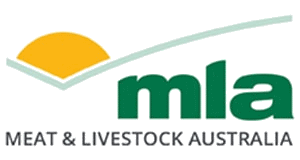PDS: Focus on Weighty Weaners
| Project start date: | 15 October 2024 |
| Project end date: | 28 August 2028 |
| Project status: | In progress |
| Livestock species: | Grass-fed Cattle |
| Relevant regions: | Victoria |
| Site location: | VIC, Gippsland Region |
Summary
The aim of this project is to demonstrate that managing mineral deficiencies and internal parasites, along with improved nutrition based on a better understanding of the energy, protein, and NDF of available feed, results in improved weaner growth rates in southeastern Australian pasture-based systems. The objectives include establishing current growth rates and identifying issues such as drench resistance and liver fluke, improving growth rates through targeted interventions on seven demonstration farms in the Gippsland region of Victoria, conducting a cost-benefit analysis, and implementing training to increase producer knowledge and adoption of best practices. The project aims to improve growth rates by 0.2 kg/day for the first 6 months after weaning in at least 3000 young stock by 2026.
Objectives
By December 2027 in the Gippsland region of Victoria, engaging 19 core producers and a minimum of 45 observer producers, the project participants will:
- Demonstrate and assess the potential of best practice weaner management to achieve improved growth rates (minimum 0.5 kg/head/day) for the 6 months after weaning by:
- In 2025, establish current growth rates in weaners on seven farms, determine the presence of drench resistance and liver fluke and establish the range of feed quality provided.
- In 2026 and 2027 improve growth rates in a study group of weaners (Case vs control) on 6 farms by
- Setting realistic target growth rates.
- Measuring micromineral levels and using effective supplementation.
- Regularly measuring WECs and fluke burdens and conducting Drench Checks to confirm drench efficacy.
- Monitoring pepsinogen where stock have unexplainable low growth rates.
- Ensuring producers on demonstration farms are competent in the use of a paper or spreadsheet-based ration calculator.
- Measuring the feed quality of pasture and supplements and calculating rations to ensure that weaners have sufficient nutrients to meet target growth rates.
- Monitoring growth rates every six weeks for 4-6 months
- Repeating this process for a second year to reinforce learnings from year one and be better able to address challenges demonstrated in the first year.
- Conduct a cost-benefit analysis to compare best practice management with conventional management of weaners.
- Implement a skills and training day for three Better Beef Network groups to increase the knowledge, skills and confidence of 10 core and 35 observer producers in improving weaner growth rates and best practice management of internal parasites. We will demonstrate adoption of improved methods of drench resistance testing and increased monitoring of weaner growth rates in in 50% of group members.
- Ten core producers will have adopted the demonstrated skills to manage their weaners.
- Conduct 2 field days / ute drives to showcase the demonstration site results and encourage adoption of key practices. These will occur at the end of years 2 and 3 and there will be at least 50 attending producers over the period of the study.
- Improve growth rates by 0.2 kg/day for the first 6 months after weaning in a minimum of 3000 young stock by 2027.
Get involved
To find out more contact the PDS facilitator:
Chelsea Hair
chelsea.hair@herdsolutions.com.au
Alison Gunn


